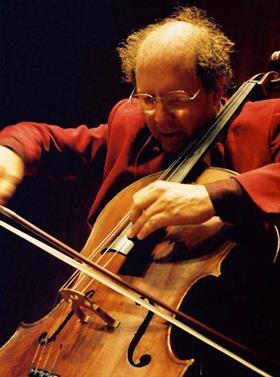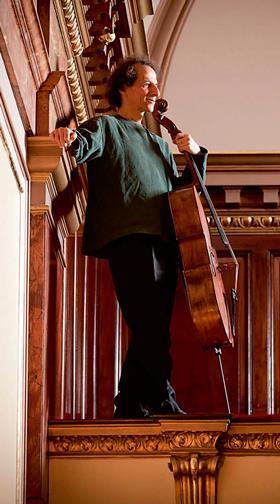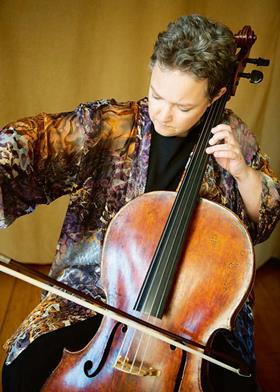To mark 100 years since the death of cellist and composer David Popper, we ask top cello teachers from around the world: how valuable are his notoriously tricky cello studies to today’s students and players?

This article is taken from the August 2013 issue of The Strad
ALEXANDER BOYARSKY, PROFESSOR OF CELLO
Along with other studies by Duport, Grützmacher and Piatti, the Popper studies are probably some of the best for covering the basics that all cellists need. Popper wrote his High School of Cello Playing as his op.73, but then he followed it with an additional ten studies in op.76, which are a bit easier – it’s a good idea to start with those as preparation for the more difficult ones.Some of the studies can even be used as concert pieces, like violinists do with Paganini’s Caprices.
Studies such as nos.9, 17 or 34 can be used in performance, especially by younger players who can show what they can do with double-stops, shifts, vibrato using different fingerings, and many other techniques. No.17 in particular is very effective, and audiences love it when it’s played in concert.
Some are really just for improving technique, though – for example nos.1 or 6. They’re very useful but musically, in my opinion, not so exciting.No.6 is a fantastic study that covers string-crossing. This involves complex movements of the right arm, sometimes from the wrist, sometimes from the elbow, and the study shows those techniques very well.
When my students start to study it, I often tell them first to learn the notes, then to try two lines in one bow stroke, and then two more lines in another bow stroke, and so on. On the second page, there are lots of coordination challenges, which have to be carried out quickly. You shouldn’t play this study all the time – after any time you haven’t been practising, you should start to recover your posture and your feeling of the fingerboard first. No.34 is another very good study, for double-stops, vibrato and shifting. Many players only do one type of shift but there are several, and you have to use all of them in that study. Once you’ve achieved that, you can use those different types of shifts in concertos and other pieces.
It’s good for students to work on two or three Popper studies at the same time – for example, one for the left hand, one for double-stops and another for bow strokes. It’s also important to set deadlines for learning them, otherwise it’s easy to continue practising them forever. Students are sometimes shocked when I ask them to play the studies from memory – but it’s important to memorise music while you are young, and to keep it in your memory. Popper studies can be a great help in achieving that.I was about 14 when I started learning the Popper studies.
When I went to college, my teacher immediately gave me nos.6, 21 and 34 to learn. But you should try to come back to the studies throughout your life: our bodies change over time, and we often have to review the way we’re playing and sitting. Coming back to the studies is a very good way of doing that. Freedom, sound quality, intonation and musical expression – they’re all covered.For Alexander Boyarsky, freedom, quality and expression can all be worked on using the Popper studies.

ALEXANDER BAILLIE, PROFESSOR OF CELLO
Hochschule für Kunste, Germany
My first teacher at London’s Royal College of Music, Joan Dickson, insisted that all her students play Popper studies. I remember that when I started she put me on no.1, and I thought: good grief, there are 40 of them! Luckily we didn’t end up going through every one. They’re very good at isolating particular elements of technique. And they follow the same kind of pattern: chromatic, Wagnerian, post-Lisztian harmony with lots of diminished chords – which is useful, because those combinations of notes often feature in Romantic music.
I use the Popper studies a lot in my teaching. I don’t think it’s necessary to do all 40 of them – if you’ve really spent time on some of them, you might find that others cover almost the same techniques. But once you’ve mastered one, it’s probably useful to try another, similar one and you should fi nd that playing it is a lot easier. They’re a bit like a car wash – once you’ve been through them and come out the other end, you will be adept in that particular technique. Your left hand will have found out about shapes, about clambering about the cello and moving with ease.
They’re something of a rite of passage – the cello fingerboard will no longer hold any fear for you once you’ve mastered them. A couple of them – nos.6 and 20 – are like a workout at the gym. You’ll have no more fear of octaves if you can handle no.20 and still smile – it’s short and sweet, and it’s quite fun to play. It makes a great encore. No.12 is also a good warm-up study.
When I first learnt it, I never thought I’d be able to play it. Joan Dickson told me to start off slowly and break it down into chunks, starting off with four beats to a bow, then eight, then twelve notes happening in a single thought. Then you go through the pain threshold and the left hand starts to behave more instinctively – you begin to fly, and there’s no holding you. You move into ever higher speeds, just enjoying the torrent of notes.
One of the most important things in playing the Popper studies is to see patterns. Most of them are moto perpetuo, and there are chords hidden within the forest of notes. It’s very important to be able to pick out the notes of the chords, then to see that some of the semitones are actually leading notes, and to learn that the passing notes should be played slightly differently.
If there’s a chord being implied, you pick out the main notes of the chord and see the other notes as incidental. Some of them are great pieces of music. No.34, in 6/8 with double-stops, is very beautiful and gentle, and it’s incredibly hard to play perfectly. If you can perform it with all the notes making sense harmonically, and balanced so that they’re all in tune with each other, you’ll have a mastery of double-stopping.

COLIN CARR, PROFESSOR OF CELLO
I first encountered the Popper studies when I was at the Menuhin School – Maurice Gendron asked us to play a few of them. But soon after I left, when I was in my late teens, I decided I’d play them all, from no.1 through to no.40. For me, working through the whole set was very valuable, but then I do all sorts of crazy things with the cello that I’d never suggest anyone else should do. I’ve never asked any of my students to play them all – but if someone showed enthusiasm for doing it, I’d back them to the hilt. It was a very time-consuming project for me – it took the best part of a year. But it’s like practising scales: if you just play them in the easy keys, you haven’t covered all the bases.
You can certainly cherry-pick Popper studies, but if you play them all, you’re much more likely to have covered everything in terms of technique.I don’t play all 40 of them now, but I fall back on a couple that I play regularly – nos.4 and 33. Somehow they’re a kind of benchmark for me, so that I know I can still play the cello. They’re two of the most difficult ones, involving a lot of shifting within slurred bowing – which is always harder because you end up with glissandos – as well as lots of string-crossing. It’s not just playing in tune that’s the challenge: it’s really the fluidity of the playing, and I enjoy that very much.
I think I sneered at the Popper studies when I first encountered them, for being not very good music, and somewhat academic. It was only later that I came to value them as supremely sharp tools. But I actually quite enjoy the music in them as well. In any case, I have an ethos in cello playing, which is that it doesn’t matter what I’m playing, be it a great concerto or a C major scale – if I don’t make music out of it, I might as well not bother. So I’ll always do my utmost to make music out of a Popper study, and I think you can make music out of them all. Nos.9 and 13 are great double-stopping studies – if students tell me their intonation deserts them when they have to play double-stops, I recommend those studies.
I’m not a great assigner in my teaching, but if a student comes to me with a particular technical problem, I’ll immediately suggest a Popper study that addresses it. There really is one for every problem in the book. They’re excellent for making a diagnosis of someone’s problem and then acting as a tool to solve it. But you have to look at them as pieces of music. The more rigorously and methodically you practise them, the cleaner they will become. But unless you remember that they have a shape, phrasing and direction, and that you should use expression and not just think about playing in tune with a decent sound, the playing won’t be as good as it could be.

RHONDA RIDER, CHAIR OF CHAMBER MUSIC
Boston Conservatory at Berklee, USA
I first encountered the Popper studies quite early on. I had a great teacher, Robert Ritsema, who assigned some of them to me before I really understood how diffi cult they were – perhaps so that I wouldn’t have any fear of them. To be able to play them, you have to know the fi ngerboard both up and down and across the strings. I think that’s what first struck me about them – that I had to learn how to get into and out of every position. And if you use Popper’s own bowings, the independence of the hands is just amazing. You’ve got long, legato bows, but within them you’re shifting up and down the instrument, trying not to make any break in the sound. And with some of the studies, you’re also crossing over different strings, having to work out rapidly where you need to be without hitting the strings in between.
‘Popper’s harmonic changes are just wild – you can tell he played a lot of Strauss and Wagner’
Rhonda Rider
One of the wonderful things about them is that they really teach you how to practise. You have to sort out what the problem is that you need to solve, and then figure out what you need to do to accomplish that. It makes you think of how you should be practising, and you can apply that to concertos and any other pieces you’re working on. For example, the dreaded no.33 is one of my favourites. You have to take it apart so that at first you’re practising just the thumb, then adding the octave, and then gradually adding the notes in between. You really need a practice plan for that study – if you don’t have the groundwork, it’s not going to work. But you learn that the hard way – and you might find out that you haven’t been practising properly for a long time.
I regularly return to the studies myself, often just to read through a few of them, or to take a longer look at one if I’ve assigned it to a student and haven’t played it in a while. But they’re such fun when you come back to them like that. And Popper’s harmonic changes are just wild – you can tell that he played a lot of Strauss and Wagner. It’s often difficult to hear the key changes, especially for those of us without perfect pitch, and it’s quite a feat just to be able to hear what note you’re meant to be playing next, and the key you’re going to. The Popper studies improve students’ knowledge of the fingerboard, and also their ability to hear where they’re going. The cello can be quite difficult in upper positions, especially in terms of string-crossing. But once you get used to that, everything comes more quickly, and you can learn classical or contemporary pieces much faster.
Technique: Playing with expression
- 1
- 2
- 3
- 4
- 5
- 6
- 7
- 8
- 9
- 10
 Currently reading
Currently readingPopper cello etudes: Rites of passage













































No comments yet